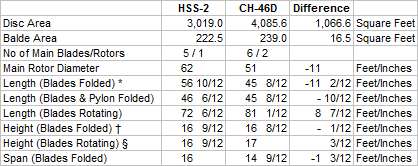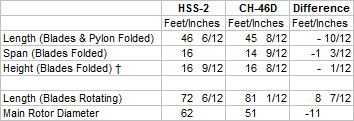The prototype S-61R flew in June 1963 but the USAF had already placed orders (IOC for the CH-3C was sometime in 1964). Of course, speed of production in Canada would depend upon whether this represented simple assembly of Sikorsky-supplied components or a full license deal. If the latter, I envision the work being broken up by region.
If, as given in my backstory, the S-61 was assembled by DHC and the S-61R by Fleet, ... who supplies the parts? Doubtless, much of it would come from Connecticut. But, under the Defence Production Sharing Programme, at least some of the components could be licensed by Canadian firms - the usual pattern was the major portion going to Canadair in Montréal, QC. My bet would be additional work going to Fairey since they had plants in both Dartmouth, NS and Sidney, BC.
Stability on the water: You see photos of AMI Agusta-built AS-61Rs in the water. However, since the S-61R lacks the Sea King's outrigger floats, I'd guess that the 'R would be less stable on the water.
I'm not sure about comparative usable interior space. Having a rear ramp has certainly proved useful for the SAR CH-149s and would have to speed battlefield egress for troops.
I should mention that, for my little backstory, I jumped ahead to post-Unification designations. In reality, early designations would likely have been CHSS-2 (RCN), S-61R (CCG), CUH-3 (CA), and CSR-124 (RCAF SAR).
Going back to riggerbob's original questions ...
Would a common airframe simplify logistics, maintenance and training? Definitely. But the full benefits of commonality probably wouldn't be realized until after Unification. Of course, the GoC would have had the option of setting up some form of 'joint' helicopter procurement, support, and maintenance organization ahead of time to reap those benefits from the outset.
How would a common airframe affect Chinook purchases, Cormorant purchases or S-92 (Sea King replacement) purchases? I think that would depend upon the nature of the original procurement. If Canada took on a full license - for potential development as well as construction - there would be the option of resumed production.
In OTL, the Sea King Replacement project stalled because there really wasn't anything to replace the CH-124 with ... other than newer Sea Kings. But what if Canada was in a position to simply restart production with Westland-style upgrades? That would've been the path of least resistance for the SKR project in 1977. So, let's say that contracts for SKR are signed in 1983 with deliveries of replacement airframes in 1985-1988. Likewise, for OTL's 1994 Maritime Helicopter Project, the earliest new-build S-61s would still be less than a decade old.
What would the effects be? OTL's 1985 New Shipboard Aircraft requirement would be being satisfied before it was ever formulated. So, no combined New Shipboard Aircraft Project/New SAR Helicopter Project would ever have happened either. Obviously the S-61/S-61R format eventually becomes dated but a range of upgrades and updates were possible. For example, as T58 supplies dried up, switch to the more powerful, British-made version - the 1,660 shp Rolls-Royce Gnome H.1400-2 (and maybe Westland's 6-bladed tail rotor?). Further on, more modern engines would have been feasible ... and maybe even with Canadian content.
Note that Canada's current large helicopter fleet has no engine commonality with the fixed-wing fleet. For example, the new FWSAR aircraft could have been a GE-powered CASA CN235 for some commonality with the CT-7s of the co-based CH-149 fleet. Instead, DND went with PW127-powered C295s for FWSAR. Meanwhile, PWC has never managed to develop a turboshaft derivative from its PW12x family. Now imagine an MLU for the 1980s-vintage S-61/S-61R fleet with new 'PW127TS' engines, composite rotor blades, 'glass' cockpits, etc. ...



